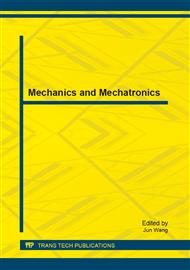p.107
p.111
p.117
p.122
p.127
p.134
p.140
p.145
p.151
Simulation of Viscous Flow around Surface Ship Using ANSYS-Fluent CFD Code
Abstract:
In this paper, numerical simulations have been carried out to determine the incompressible free surface flow around a Wigley hull form for which experimental results are available. A commercial viscous flow finite volume code using the two-phase Eulerian-Eulerian fluid approach has been used in this study. The simulation conditions are the ones for which experimental results exist. The shear stress transport (SST) turbulence model has been used in the viscous flow code. A structured grid was used with the viscous flow code for meshing the computational domain. The results compare well with the available experimental data, which make their complementary application useful for determining the total ship resistance.
Info:
Periodical:
Pages:
127-133
Citation:
Online since:
October 2013
Authors:
Keywords:
Price:
Сopyright:
© 2013 Trans Tech Publications Ltd. All Rights Reserved
Share:
Citation:


